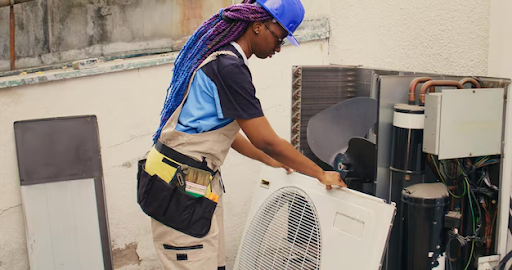As summer fades and the crisp air of autumn arrives, it’s time to turn our attention to preparing our homes for the colder months ahead. A crucial aspect of winter preparation is ensuring your heating system is in top condition to keep you warm and comfortable throughout the winter. While the furnace might be the first thing that comes to mind, neglecting your air conditioning system during winter can also lead to problems down the line. Here’s a comprehensive guide to winterizing both your heating and cooling systems for a worry-free winter.
Preparing Your Air Conditioning System
While your air conditioner (AC) won’t be actively cooling your home during winter, proper winterization can prevent damage and ensure it’s ready for next summer.
- Clear debris from the outdoor unit: Leaves, twigs, and other debris can accumulate around the outdoor unit of your ac repair throughout the fall. Remove any debris to ensure proper airflow and prevent damage to the unit.
- Cover the outdoor unit (optional): Consider purchasing a breathable AC cover specifically designed to protect the unit from harsh winter elements like snow, ice, and heavy winds. However, avoid using a plastic cover as it can trap moisture and lead to rust.
- Turn off the power to the outdoor unit: Locate the disconnect switch for your AC unit and turn it off to prevent accidental startup during winter.
Optimizing Your Heating System
- Schedule a professional furnace inspection: A professional inspection by a qualified technician is the best way to ensure your furnace is operating efficiently and safely. During the inspection, the technician will clean and adjust the furnace, check for potential problems, and identify any necessary repairs before the cold weather hits furnace services. A well-maintained furnace will not only keep you warm but can also save you money on your energy bills.
- Replace the air filter: A clogged air filter restricts airflow and reduces the efficiency of your furnace. Replace the air filter with a high-quality option recommended for your furnace model at the beginning of the heating season.
- Check and seal air leaks: Drafty windows, doors, and other openings around your home allow warm air to escape and cold air to enter, forcing your furnace to work harder and wasting energy. Seal any air leaks you find with caulk, weather stripping, or other appropriate materials.
Additional Winterization Tips for Your Home
- Inspect and clean your chimney (if applicable): If you have a fireplace, have your chimney inspected and cleaned by a professional chimney sweep before the first fire of the season. This removes soot and debris that can build up and pose a fire hazard.
- Reverse ceiling fan direction: Many ceiling fans have a switch that allows you to reverse the direction of the blades. During winter, set the fan to rotate clockwise. This creates a gentle updraft that pushes warm air trapped near the ceiling back down to the living space.
Conclusion
By following these simple winterization steps, you can ensure your home’s heating and cooling systems are ready for the winter months. A well-maintained system will not only keep you comfortable but can also save you money on energy bills and prevent costly repairs down the road. Remember, a little preparation now can go a long way in ensuring a warm, cozy, and trouble-free winter season for you and your family.
